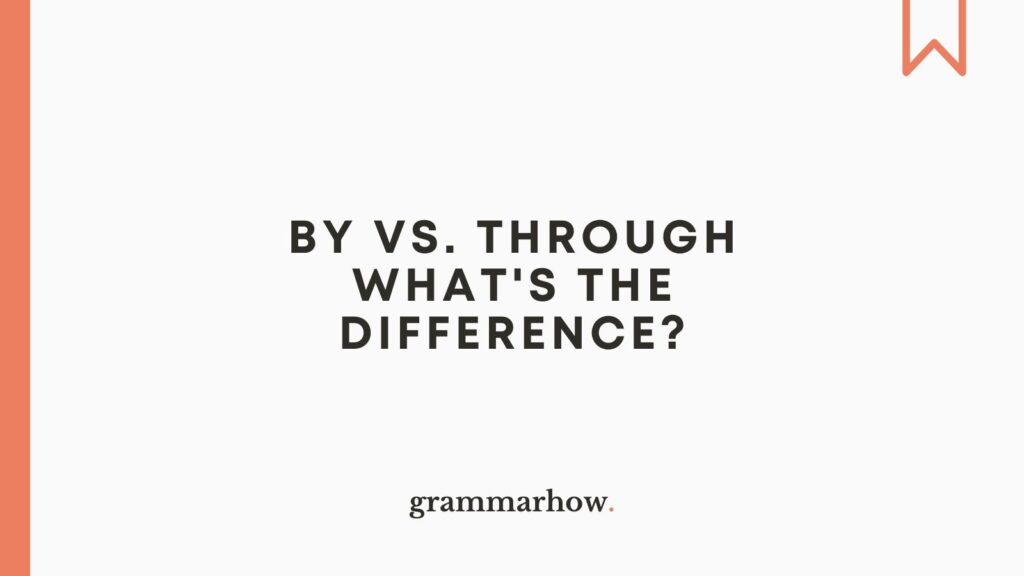Are you trying to figure out the main differences between the prepositions “by” and “through”?
Don’t worry; you’re not alone!
Luckily, that’s where we come in! This article will explain all you need to know about using “by” and “through” and how they differ.
By vs. Through – What’s the Difference?
“By” generally means you’re using the means of something to complete another task. For example, “the house is heated by gas.” “Through” means something is traveling from point A to point B. For example, “we drove through the city.” They do overlap, but these are the fundamental meanings.
Here’s another quick look at the two prepositions:
- I paid by cheque. I’m not sure why you’re making such a big deal out of that.
- She wanted to go through the checkouts, but I told her that was foolish.
“By” is a much more complicated preposition than “to.” It applies to many more situations and has multiple useful meanings. So, we’ll try not to overwhelm you with all the different nuances that come with it!
Keep reading to find out more about how “by” and “through” work in your writing. At the end of this article, you’ll have more confidence in your ability to use them.
By
“By” is a very broad preposition. It shows that you are using the means or mechanisms of something to complete a task. There are other meanings, but that’s the one we will focus on here.
So, check out the examples below:
- I paid by bank transfer. (The means is “bank transfer”).
- It is provided by the teacher. (The means is “the teacher”).
Generally, if you can identify what causes something to happen, “by” is the correct preposition. This will allow you to be more confident in your selection.
However, there is one exception that overlaps with “through.”
- We walked by the city.
- We walked through the city.
Here, both “by” and “through” work. Both prepositions also indicate movement or traveling from one point to another.
The key difference here comes down to positioning.
To start, “by the city” means you walked alongside the city but did not go through it.
“Through the city” means you walked inside the city (usually from an entrance to an exit) rather than around it.
While “by” and “through” overlap, in this case, they are not interchangeable. They do not mean the same thing and imply different methods of travel.
Through
“Through” is a more specific preposition, which generally makes it easier to use. You can use it to highlight your movement from one point to another.
You can use “through” literally or figuratively to highlight something that moves from one point to another.
These examples will show you how to use it literally:
- I walked through the valley.
- We flew through the air!
Here, “through” implies that something travels from point A to point B. It shows some form of movement or transport.
And here’s how you might use it figuratively:
- I learned about this through email exchanges.
- You will only succeed through hard work and dedication.
Figuratively, you can use “through” to show that something happens over time due to another cause. However, it can only happen when you put in the correct amount of time to achieve it.
Conclusion
Sometimes, “by” and “through” overlap, but they are not interchangeable.
In the most basic sense, “by” implies that you are using the means or mechanisms of something. It can also show you are moving alongside an object.
“Through” instead shows movement from Point A to Point B. It is more specific than “by.”

